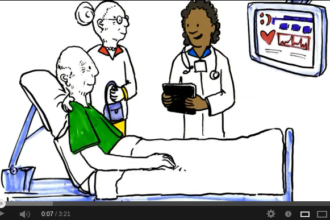Due to poorer health, higher cost services and pent up demand for health care, there are numerous concerns about high-risk and expensive individuals. These are people who were previously uninsured or enrolled in high-risk plans that will soon be covered by exchanges. Further, there is concern that premiums could skyrocket in 2014 if the unhealthy disproportionately move to exchanges for coverage while younger, healthier individuals slowly and cautiously join.
Due to poorer health, higher cost services and pent up demand for health care, there are numerous concerns about high-risk and expensive individuals. These are people who were previously uninsured or enrolled in high-risk plans that will soon be covered by exchanges. Further, there is concern that premiums could skyrocket in 2014 if the unhealthy disproportionately move to exchanges for coverage while younger, healthier individuals slowly and cautiously join.
The Affordable Care Act was partially designed to mitigate these concerns. One method in particular is aimed at spreading the risk amongst the individual market for the first three years through “reinsurance”.
The initial description of reinsurance was that all insurers would be responsible for paying into the program. Insurers were eligible to get funds in return, if a large portion of their enrollees were high-risk and expensive. The plan was designed to pay out $10 billion in year one, $6 billion in year two and $4 billion in year three to insurers of high-risk plans, incentivizing them to phase in their high-risk (and higher cost) individuals onto the exchanges.
The goal was to keep the individual market premiums low by balancing out costs in the exchanges, so that the young and healthy would equally participate. The gradual transition would give further funding to insurers to support their high-risk population, hopefully, mitigating the obvious discrimination of not allowing those high-risk persons equal, free market participation in the individual market.
Recent changes made by the federal government however, now have states and insurers concerned about the program they are required to pay into and get funding from, once the health care law takes effect.
The Department of Health and Human Services (HHS) has released regulation clarifying that state high-risk pools are no longer eligible for the return of funds, and that the government money will not be given for anyone with medical costs around$60,000 per year. This shifting of incentive has many health policy analysts worried that states now have no reason not to dump their high-risk pools onto the exchanges on opening day.
Under the new regulations it actually makes sense for insurers to move high-risk enrollees as quickly as possible to get larger shares of the reinsurance funds. Therefore, insurers like the Blue Cross Blue Shields of the world will most likely have to ask HHS for more flexibility, and perhaps assistance during the transition period.
Reinsurance was anticipated to slowly maneuver high-risk people from the state’s pre-existing condition plans and high-risk pools plans onto the exchanges in a manner that prevented a substantial jolt to the individual market. However the recent clarification may actually have the opposite effect on its intended goal, forcing insurers to quickly move high-risk individuals en masse to the exchanges. This drastic shift in health care dollars may in fact destabilize the individual market, rather than slowly coaxing a change.






